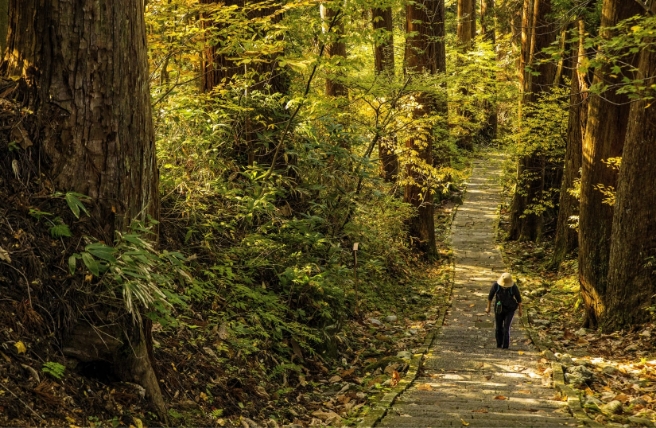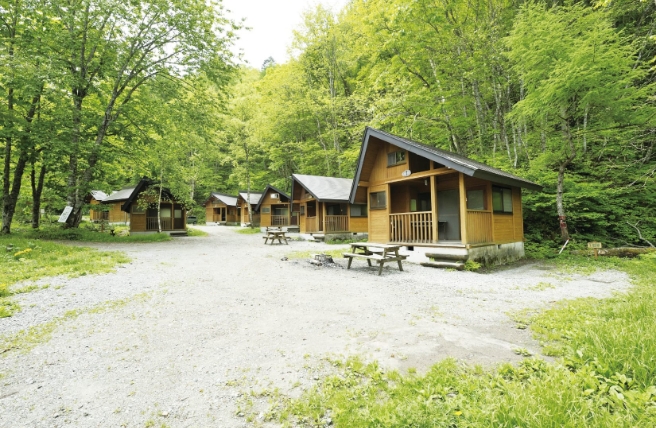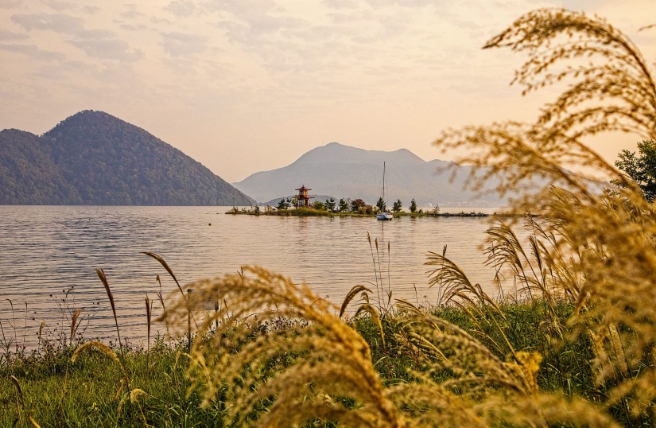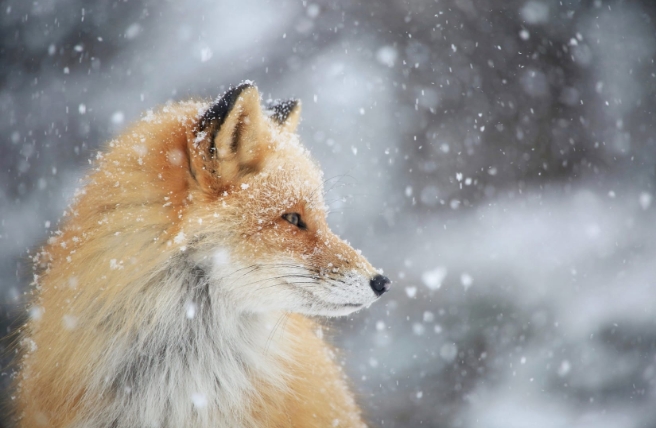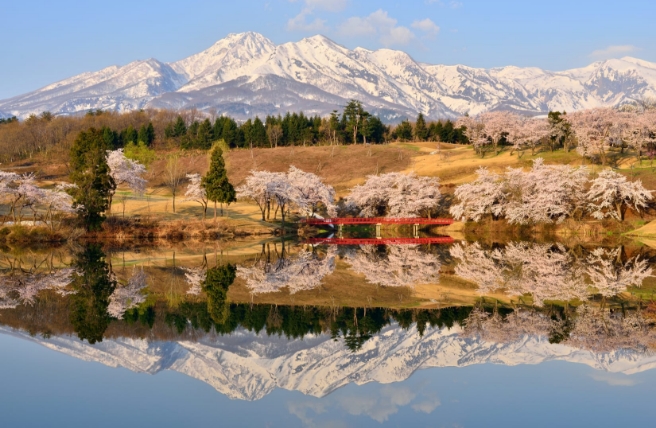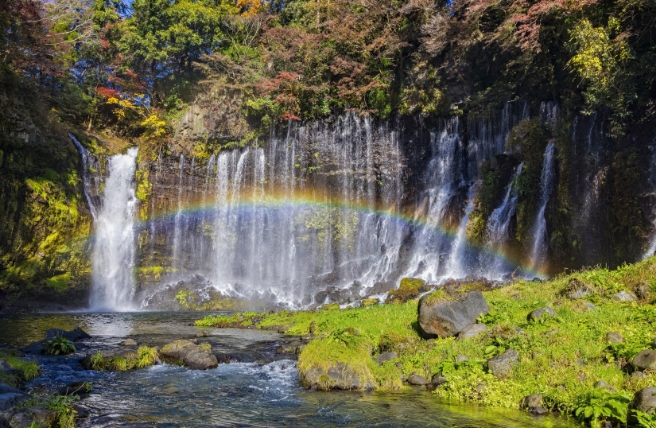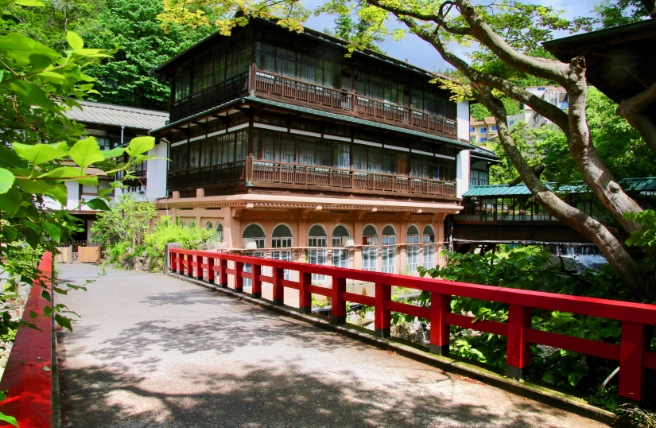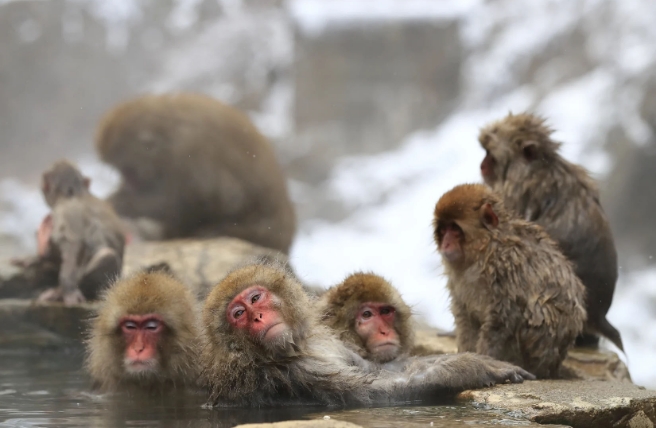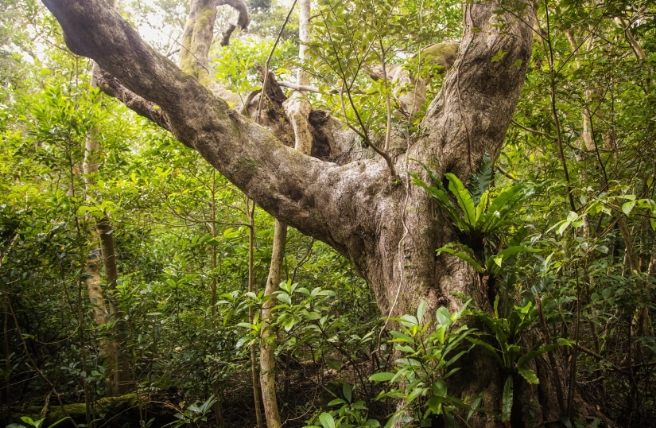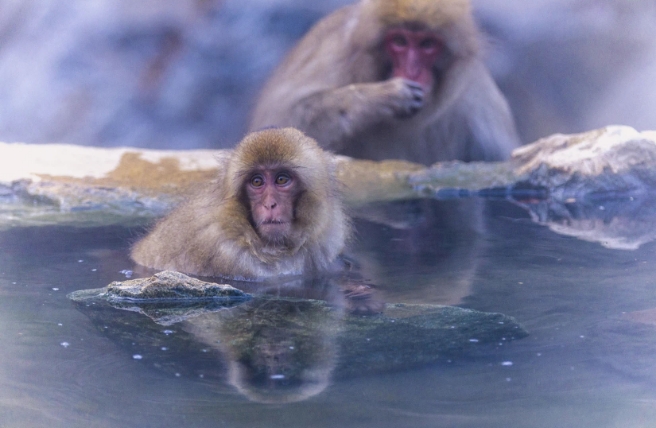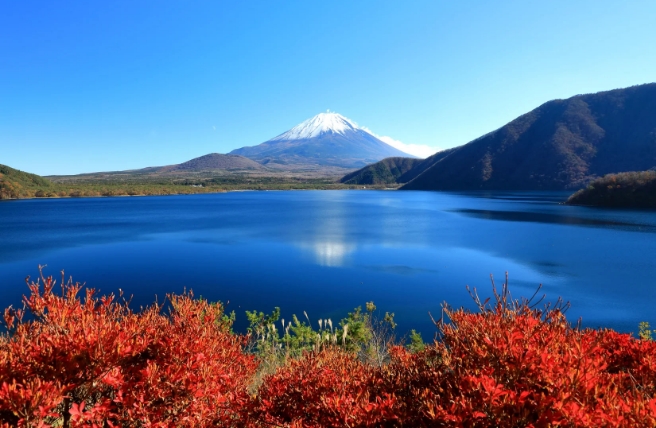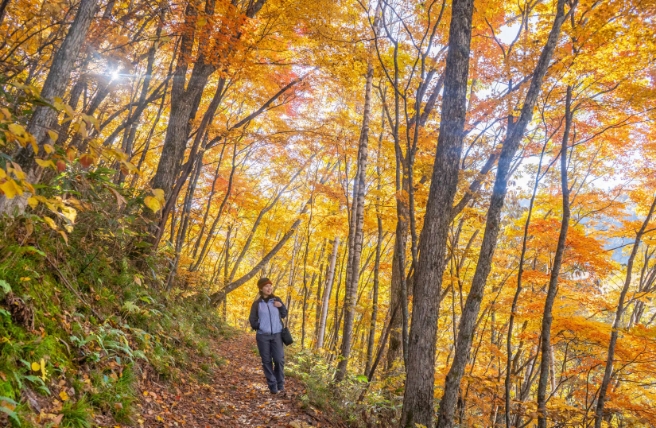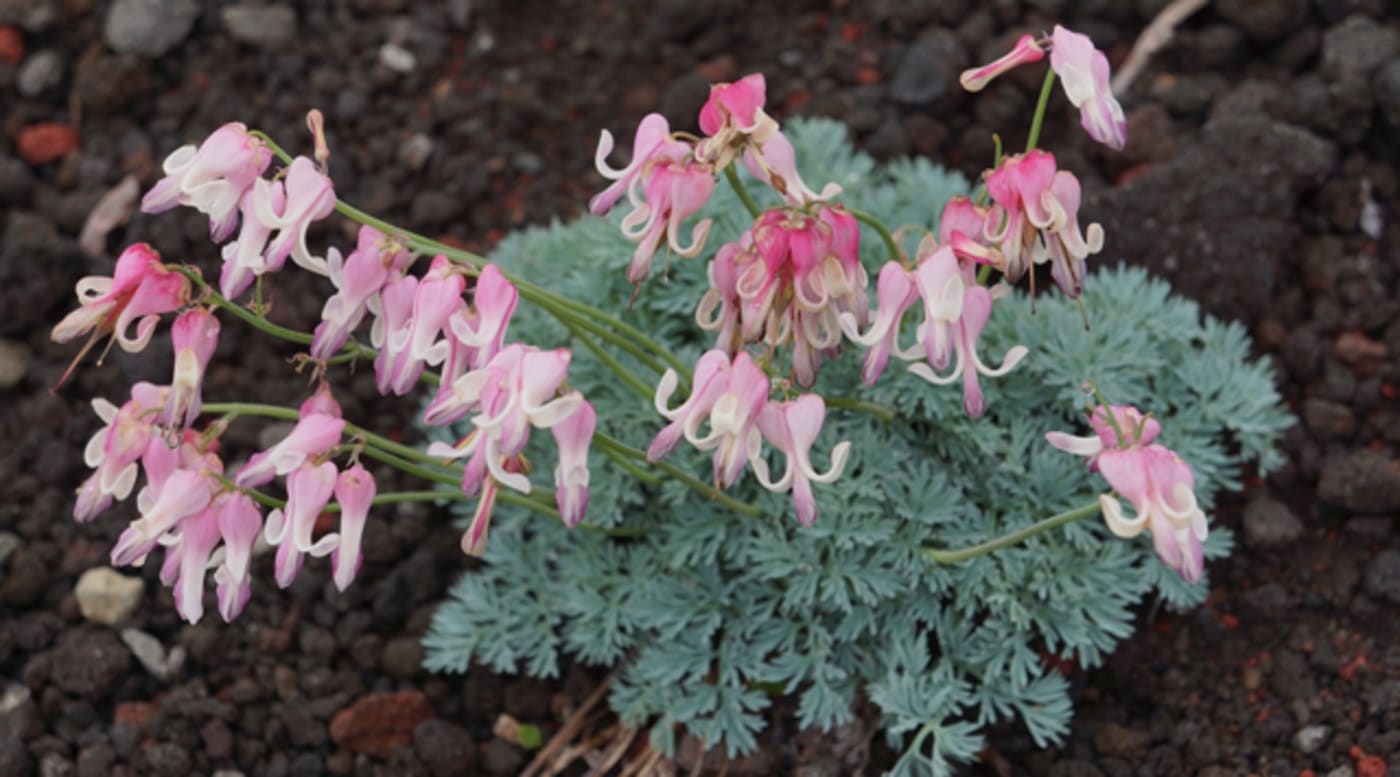The forests of Towada-Hachimantai National Park primarily consist of deciduous trees, but conifers including Maries' firs grow on the peaks of the Hakkoda Mountains and Mount Hachimantai. On the ridgeline you'll also see a variety of marsh and alpine plant communities, with different flowers blooming depending on the season.
The woodlands are home to mammals such as Japanese serows, Asiatic black bears, Japanese flying squirrels and Japanese martens, which all depend on a rich forest environment for survival. Amphibians such as forest green tree frogs and black salamanders, and insects including the ezoharuzemi cicada (Terpnosia nigricosta) and ruriitotombo damselfly (Enallagma boreale circulatum) thrive here, as do birds such as great spotted woodpeckers, ruddy kingfishers and spotted nutcrackers.
